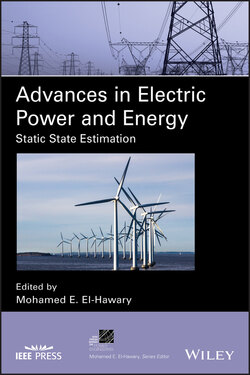Читать книгу Advances in Electric Power and Energy - Группа авторов - Страница 75
2.5.12 Conclusions
ОглавлениеConsidering recent advances in computational techniques, this work addresses the electric state estimation problem from a mathematical programming perspective.
In this chapter, the most common state estimators are formulated as optimization problems and implemented, proving to be computationally efficient and numerically accurate.
From the computational point of view, QC and LAV techniques perform faster than the conventional WLS estimator, saving up to 75% CPU time (compared with the WLS method directly solved as an optimization problem). On the other hand, mathematical programming formulation of some estimators (such as LMS and LTS approaches) involves non‐convexities and a significant number of binary variables, resulting in higher computational burdens.
With regard to estimation accuracy, numerical simulations denote that the LMR and QL techniques provide an estimation accuracy level that is similar to that obtained using WLS method. On the other hand, if the measurement set is corrupted with errors that χ2 test cannot detect, WLS estimation quality deteriorates, providing the worst estimation quality (if LMS and LTS approaches are not considered). It is observed that QL and QC techniques outperform the rest of estimators, followed by LMR procedure.
The computational analyses carried out in this chapter have led to the conclusion that alternative estimators are potential substitutes for traditional WLS method. The state of the art of current nonlinear optimization solvers and recent advances in computational equipments allow using robust estimators in real electric energy systems.
